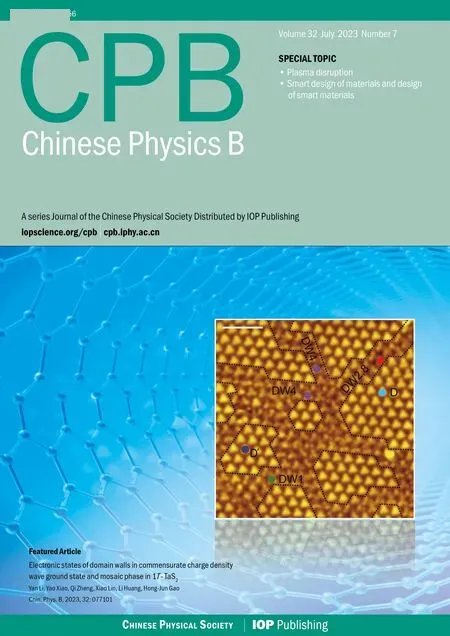Energy conversion materials for the space solar power station
Xiao-Na Ren(任曉娜), Chang-Chun Ge(葛昌純), Zhi-Pei Chen(陳志培), Irfan(伊凡), Yongguang Tu(涂用廣),Ying-Chun Zhang(張迎春), Li Wang(王立), Zi-Li Liu(劉自立), and Yi-Qiu Guan(關(guān)怡秋)
1University of Science and Technology Beijing,Beijing 100083,China
2Frontiers Science Center for Flexible Electronics,Xi’an Institute of Flexible Electronics(IFE)&Xi’an Institute of Biomedical Materials and Engineering,Northwestern Polytechnical University,Xi’an 710072,China
3Qian Xuesen Laboratory,China Academy of Space Technology(CAST),Beijing 100081,China
Keywords: space solar power station,photovoltaic cell,thermoelectric materials,lasers
1.Introduction
Energy is the basis for survival and development of human society.Energy shortages and traditional fossil-fuelinduced global climate and environmental problems have become the most important factors that restrict sustainable growth of the world.Therefore, it has become a global consensus to develop clean and renewable energy sources,which include hydraulic-electro generation, wind power generation,solar energy, bioenergy, tidal power, etc.Among them, solar energy is the most promising, since it is clean, efficient, unlimited,and environmentally friendly.
Unlike solar energy on Earth,space solar energy will not be affected by weather, time, and location.Besides, the intensity of sunlight in space is 36% higher than that on the ground.[1]Therefore,Dr.Peter E.Glaser of the United States proposed the concept of the space solar power station(SSPS)in 1968,[2]whose ultimate goal is to supply power at any time to anywhere on Earth.According to the design,the SSPS collects sunlight with high efficiency and converts it to electricity, which can be transmitted to the ground for human use,or transmitted to satellites and aerospace craft.The SSPS includes two types, i.e., microwave wireless power transmission(MWPT)and laser wireless power transmission(LWPT).The MWPT converts solar energy to electric power in space and then transmits it to Earth by microwaves, while LWPT utilizes laser-transparent dielectric materials to pump sunlight and convert it to electric energy on Earth.
However, the SSPS is still not realized after decades of progress.The AIR Force Research Laboratory and Northrop Grumman in the USA are undertaking space verification of key technologies.Japan plans to build 1 GW commercial space solar power stations before 2025.China is building megawatt space solar experiment power stations before 2030,and planning to build a 1 GW SSPS circa 2050.The reason why the SSPS is immensely difficult to implement is the abundant technology requirements, and one of the requirements is materials.Materials served in space must face the severe conditions characterized by vacuum, intense ultraviolet radiation from the sun, ionizing radiation, micrometeoroids and debris impacts,thermal cycling with wide fluctuation,atomic oxygen,high-energy particles and solar wind damage etc.[3,4]To be specific,a neutral thermosphere causes material issues,such as oxide formation on metals, increased electrical resistivity, and decreased optical reflectance; a thermal environment contributes to material expansion;plasma leads to charging and arcing of anodized surfaces and solar arrays;micrometeoroids result in catastrophic damage,cracking and pitting;a solar environment embrittles and ultraviolet darkens the material’s surface;ionizing radiation degrades materials’mechanical properties;magnetic fields induce torques;atomic oxygen is responsible for corrosion; debris causes mechanical damage; and vacuum induces outgassing, effusion, evaporation,adhesion,cold welding,and sublimation.[5,6]These harsh and complex service conditions challenge materials to be more robust.In general, the SSPS power system consists of three parts: a solar power generation(or collection)system,a space microwave or laser conversion transmitter system,and ground receiving and power-conversion devices.From solar energy in space to the electricity on the ground,we believe energy conversion in space is the most crucial.Hence, in this paper we present a review of the energy conversion material candidates for the SSPS.
2.Space solar power conversion materials
2.1.Space photovoltaic cells
On March 17,1958,the“Vanguard-1”satellite launched by the United States installed a solar cell array as a power supply for the first time.Over the following 25 years, nearly all satellites were powered by monocrystalline silicon solar cells, and their power conversion efficiency increased from 5% to 18%.At present, more than 90% of the global photovoltaic (PV) market is comprised of Si-based solar cells(Fig.1).[7]The advantages of Si, such as availability, good stability,non-toxicity,low cost,natural abundance,and an appropriate band gap that corresponds to the solar spectrum,are closer to the optimum value for the conversion of solar energy into electricity.[8,9]
In recent decades, solar cells have progressed from monocrystalline silicon solar cells to III–V multijunction solar cells (for example, gallium arsenide (GaAs) solar cells).Compared with silicon solar cells, GaAs solar cells have the following advantages: (1)higher photoelectric conversion efficiency;(2)direct-gap semiconductor materials;(3)band-gap tailoring by controlling the material composition and doping;and(4)superior radiation resistance.
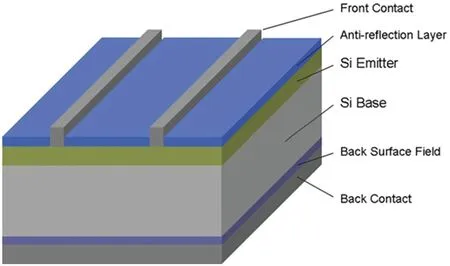
Fig.1.A typical cross-section scheme of Si-based solar cells (reproduced with permission from Ref.[10]).
After comprehensive consideration of the power,cost,reliability, weight and size, III–IV-based solar cell flexible arrays are the best choice.[11]For example, by applying GaSb as a substrate, the power generation efficiency can be improved to 44.5%.[12]Today, due to their high efficiency and super radiation resistance, III–V multijunction solar cells are the hotspot in the field of space application.Figure 2(a)shows the schematics of 4-and 5-junction cells.In 1983,GaAs solar cells were used on spacecraft for the first time.In recent years,new materials and new structures for multijunction solar cells have continuously appeared with low-cost,light-weight,flexible,and high power-to-weight ratio characteristics.[13]Highefficiency III–V triple-junction cells (non-concentrator) with the highest power conversion efficiency of 37.9%became the mainstream of space solar cells.Moreover, high-efficiency III–V triple-junction cells(concentrator)with certified power conversion efficiency of 40.7% have been obtained.[14]The GaInP/GaAs/Ge (1.82/1.42/0.67 eV) lattice-matched triplejunction cells have achieved>30%efficiency over the last two decades,and have fulfilled many space applications.[13]
With the improvement of manufacturing and deposition technology, the solar cell industry has developed tremendously.Metal halide perovskites have sparked strong interest because of their superior semiconductor properties,such as effective absorption of light,[15]long carrier lifetime,[16]low exciton binding energy,[17]and high defect tolerance,[18]as well as exceptional solution processability.[19]The general chemical formula of metal halide perovskite isABX3, whereAis a monovalent cation (such as FA+ [formamidinium], MA+[methylammonium], or Cs+),Bis a divalent metal cation(such as Pb2+, Sn2+, or Ge2+), andXis a monovalent halogen anion(such as I?, Br?, or Cl?).[20]Photovoltaic devices based on perovskite absorbers have achieved certified efficiencies of 25.7%with single-junction devices and power conversion efficiency of 31.3%with tandem devices,[21]whose best power conversion efficiency is comparable to that of commercially available products in the photovoltaic market.Combined with low-temperature solution processability and radiation resistance,[22]perovskite solar cells(PSCs)are rendered as potential candidates to compete with commercially available photovoltaics in special application fields.
To date, three pioneering experiments have been carried out under real space conditions:in situdemonstration of PSCs’ functionality and power generation by Mancaet al.in 2018,[23]Zhuet al.in 2019[24]and Muller-Buschbaumet al.in 2020,[25]respectively.In these space experiments,PSCs were loaded on spacecraft, such as the high-altitude balloon[23–25]and the suborbital rocket.[25]For example, Zhu and coworkers sent their mixed-cation PSCs into near space using a high-altitude balloon at an altitude of 35 km (Figs.3(c)–3(i)).[24]Two kinds of regular TiO2mesoporous large-area PSCs (active area of 1.00 cm2) were investigated (Fig.2).The FA0.81MA0.10Cs0.04PbI0.55Br0.40based device retained 95.19%of its initial PCE during the 2 h test under AM0 illumination.In addition,they adapted the UV filter to guarantee device stability.Although striking progress has been made in terms of material stability and performance evolution of PSCs under space extreme environments,there are several key challenges that need to be addressed to obtain pragmatic PSCs for space applications: (1)understand the physical mechanism of PSCs under space extreme environments;(2)clarify the comprehensive impacts of space environment on PSCs; and (3)satisfy the specific requirements of space for the photovoltaics.
Cu(In,Ga)Se2(CIGS)-based cells (Fig.3) are another type of promising and widely used solar cells;they are derived from CuInSe2(CIS)solar cells,and characterized by remarkable efficiency,easy integration,similar efficiency to Si-based cells and lower costs.[26–29]The excellent properties of CIGSbased cells are derived from their tunable bandgap and high adsorption coefficient.[27–30]Due to these advantages, CIGSbased solar cells are one of the promising candidates for the next-generation solar cells.To obtain high-efficiency CIGS cells, efforts have been made to dope elements into CIGS,as shown in Table 1.
Like CIGS solar cells, CdTe and Cu2ZnSnS4(CZTS)thin-film solar cells are chalcogenides, which is a kind of solar cell for photovoltaic devices based on thin-film technology.Chalcogenide solar cells are a promising type of thin-film solar energy.[26,31,32]
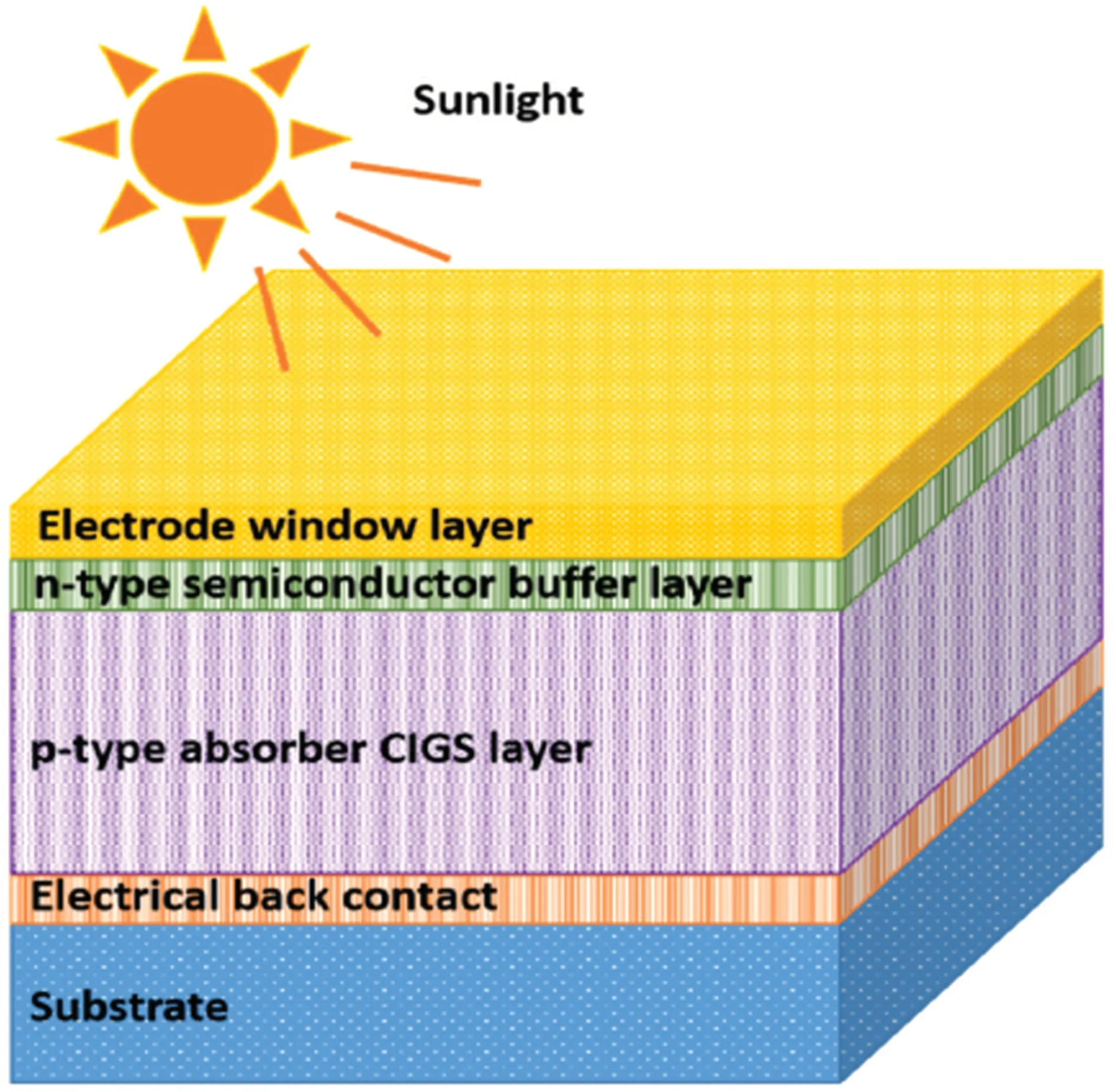
Fig.3.Basic multilayer structures of the CIGS-based solar cell(reproduced with permission from Ref.[27]).
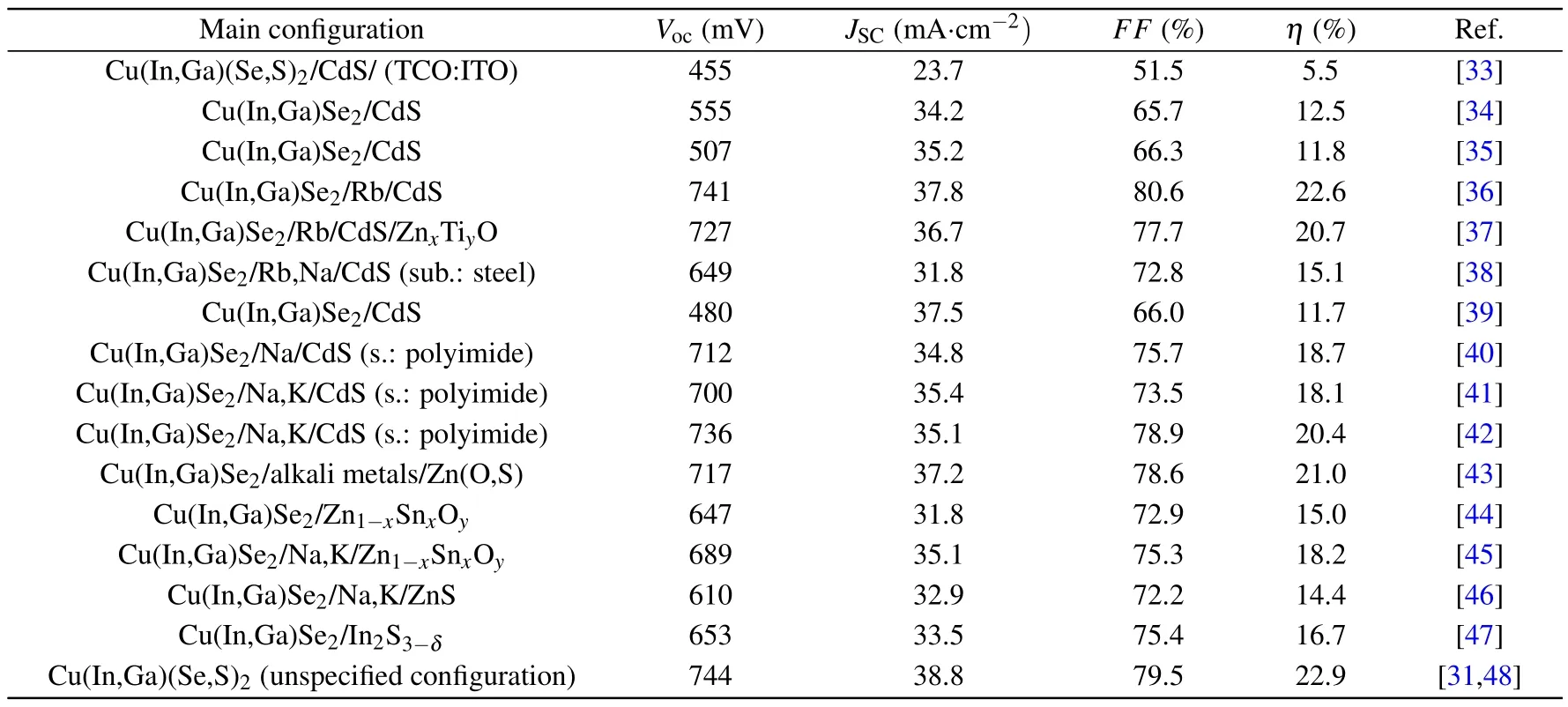
Table 1.A PV parameters review of the CIGS solar cells.[26]
2.2.Thermoelectric materials
According to the Seebeck effect,thermoelectric(TE)materials can convert thermal energy to electricity.The temperature gradient between both ends of the TE device causes carrier motion, which induces thermoelectric conversion.Theoretical efficiency of thermoelectric power generation is as follows:
whereThis the temperature of the hotter side;Tcis the temperature of the colder end.Here,Z=α2σ/λ, which is pyroelectric merit, andαis the Seebeck coefficient, sometimes usingSstanding for the Seebeck coefficient;σmeans conductivity; andλmeans thermal conductivity.In addition,?T=(Th+Tc)/2.Furthermore,ZTis a dimensionless figureof-merit and is defined as follows:
As shown in Fig.4,[49](a)is the maximumZTvalues(ZTmax),cost and cost-effectiveness of the reported TE materials,which include clathrates, GeTe, half-Heuslers, Bi2?xSbxTe3(BST),SnTe, PbTe, Sn1?xSe, Cu2?xSe, BiCuSeO, and skutterudites.Typical TE materials are always characterized by highZTmaxvalues,while the highZTmaxvalue reproducibility of some materials is not satisfactory.
It has been reported that As2SeTe2shows a lower threshold voltage and greater thermoelectric power after irradiation byγ-rays.[50]Besides,TE materials can work under vacuum,air, high temperature or pressure, and electric or magnetic fields.Furthermore, the thermoelectric device has the advantages of:a)none movement parts,and do not need to be maintained;b)stable structure,high mechanical strength,and reliability;c)long service life;d)small size and low weight;and e)low cost.With regard to the aforementioned properties,TE materials(i.e.,PbTe)have already been studied and applied by NASA and Russia for space exploration and military applications in the 1950s and early 1960s.[51,52]After more than 30 years,SiGe and PbTe devices have been used under space vacuum environments as isotope temperature difference batteries.
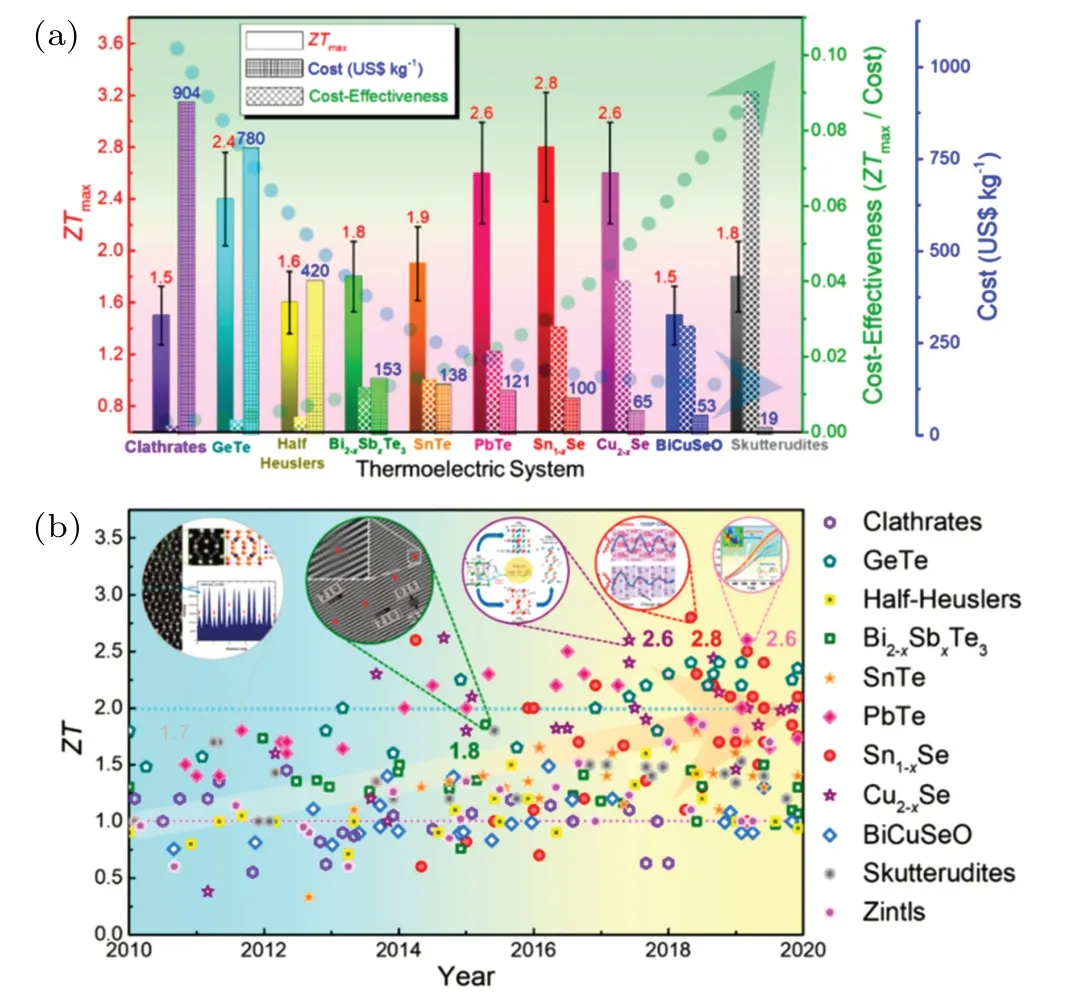
Fig.4.From the last 10 years,the ZT value development for the stateof-the-art thermoelectric material (reproduced with permission from Ref.[49]).(a) Reported maximum ZT values (ZTmax)with error bars,calculated cost, and calculated cost-effectiveness(ZTmax/cost), and(b)the timeline of the state-of-the-art thermoelectric materials(bulks).
However, thermoelectric materials have a critical defect, which is low conversion efficiency.To improve the thermoelectric properties, intensive efforts have been made,such as electronic band engineering,phono-glass electron crystal strategies, nano-engineering, and magnetic effects strategies.[53]Taking PbTe as an example, researchers have focused on minimizing lattice thermal conductivity via rational multi-doping, such as the fact that the p-type Na0.03Eu0.03Sn0.02Pb0.92Te shows an ultrahighZTof~2.51 at 823 K.[54]In addition,in 2014,Zhaoet al.reported SnSe with a highZTvalue of 2.6±0.3 at 923 K,which is measured along thebaxis of the single crystals, while itsZTalong thecaxis andaaxis are 2.3±0.3 and 0.8±0.2,respectively.[55]Moreover,from Fig.4(b),[49]we can see that in recent years,theZTvalue of thermoelectric materials has increased, showing that the thermoelectric materials have higher and higher energy conversion efficiency.As a result, thermoelectric materials are becoming increasingly more competitive with photovoltaic cells as space solar power conversion materials.Furthermore,theoretical calculation suggests that gradation of dopants or compositions(such as Bi3Ti,PbTe or SiGe)may improve the conversion efficiency of TE materials,e.g.,the effective maximum power of graded PbTe is 11% higher than that of nongraded PbTe.[56]
In addition to space solar power conversion,thermoelectric materials can be used as thermoelectric refrigerators in space.For the SSPS system,the heat dissipation system is an important power conversion system too.In this case,the thermoelectric materials can play a role.Moreover, to improve the solar power conversion efficiency,space solar photovoltaic cells and thermoelectric devices can be used in combination.Since photovoltaic cells have high efficiency, but they cannot use all the solar power,they only convert specific spectrum solar light.In this case, thermoelectric devices can convert the solar power that photovoltaic cells cannot.
2.3.Outlook of the space solar power conversion materials
As shown in Table 2,traditional photovoltaic cells like Sibased and III–V multijunction solar cells have been applied in space already,while the newly developed cells like perovskite and CIGS or CZTS have no chance to participate in space missions.However,the newly developed cells show more competitive characteristics, especially perovskite (light-weight, lowcost,high radiation resistance,and flexible characteristics);we believe this is the most promising material in the long term.In the near future, improved III–V multijunction solar cells should take on more expectations.However,the efficiency of thermoelectric materials is still difficult to improve, although they have been studied for years.Considering their unique structure without moving parts, thermoelectric materials are quite suitable for energy conversion processes in space where mechanical stability and lifetime are more important than efficiency.
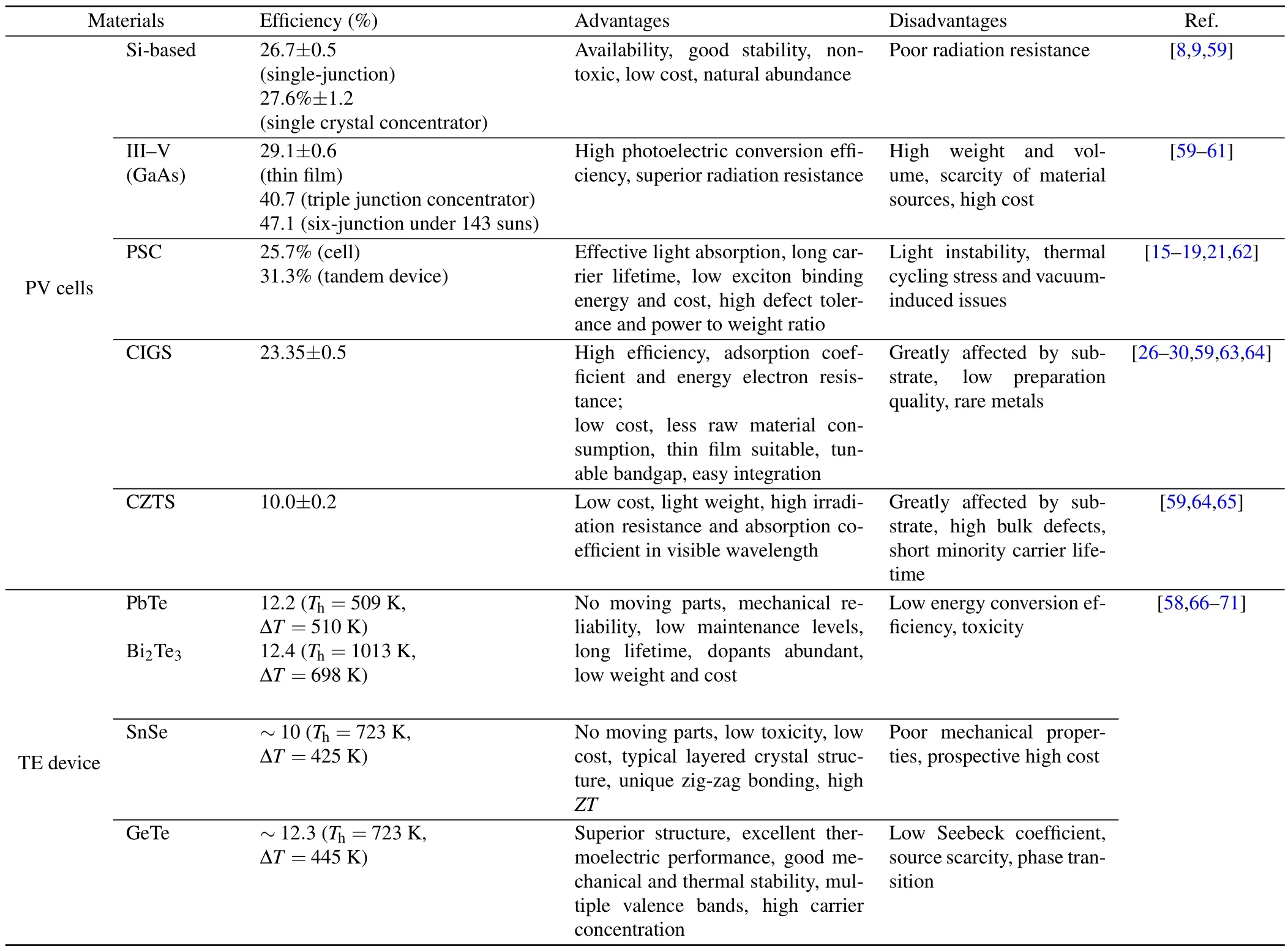
Table 2.A comparison of the representative space solar power conversion materials.
In addition, efficiency, low cost, and light weight materials are important properties of energy materials in space.In addition, specific power output with regard to the mass and surface area of photovoltaic arrays should be as high as possible, and their degradation under intense UV and ionizing radiation during the whole service life should be as low as possible.[57]Similarly, long-term chemical stability and the radiation tolerance of thermoelectric materials need to be improved.[58]
3.Key functional materials for the LWPT system
From the first report in the 1960s (i.e., Earth–Moon distance measurement in 1962) and service on Apollo 15 in 1971,[72–75]there is a long history of lasers that have been designed for space wireless power transmission, communication and photochemistry.[76–78]Characterized by simplicity,high efficiency and a long lifetime,the LWPT system can convert space solar power to laser power via solar-pumped lasers(SPL).[79]According to the design of LWPT (Fig.5), solar power will be transmitted to Earth or spacecraft directly by SPLs.During the transmission process, the laser beam can travel a long distance without diverging, and can be used for solar hydrogen generation, space propulsion, free-space optical communication, space solar power systems, and space debris mitigation.[80]Compared with the MWPT system, the weight of LWPT is lighter and the components are simpler,[81]while the LWPT system needs a huge high-intensity condenser mirror and precise solar tracking system for SPLs[82–84]Moreover,the space solar conversion efficiency of LWPT can achieve 30%, which is higher than the MWPT system (no more than 20%around 2000),and 70%laser light can be converted to electricity by solar batteries; therefore, the LWPT system instills us with more confidence.[80]
In addition, key techniques for the LWPT system include:[80](a)SPLs for LWPT application,(b)a power beam for long-distance transmission, (c) laser conversion to other energies, (d) an integration system, (e) lower costs to lift the payload to geostationary orbit(GEO),and(f)a robot for giant space facility construction.
As one of the key techniques of LWPT, the laser dielectric material for the SSPS should meet the requirements of a long lifetime,high efficiency,excellent laser performance(including a wide absorption spectrum,large emission cross section and low laser threshold),good thermal performance(high thermal conductivity and thermal shock resistance), easy to prepare in a large size and light weight.Moreover,laser transmission from space to Earth must have a safety system to prevent high-energy lasers from harming anything on Earth, especially human beings,animals,airplanes,etc.[85]In addition,low susceptibility to optical misalignment and contamination,and unattended operation are the required properties of lasers applied in space.[86]
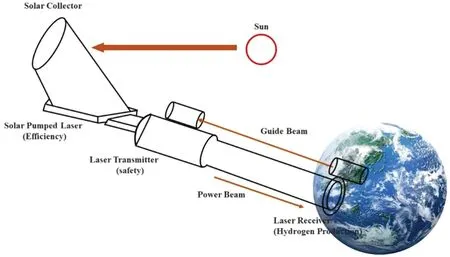
Fig.5.The concept of LWPT and its key elements (reproduced with permission from Ref.[80]).
Several types of lasers are available for space application,such as solid-state lasers,semiconductor lasers(like GaAs,In-GaAs, InP, and InGaAsP), fiber lasers, gas lasers, dye lasers and chemical lasers.However,due to their relatively short lifetime and poor radiation resistance,the application of gas,dye and chemical lasers in space is more difficult.[86]Therefore,the laser candidates for LWPT are solid-state, semiconductor and fiber lasers.As reported in the 1960s, yttrium aluminum garnet (YAG) single crystals were employed in space.[87]Since then, YAG-based lasers became a type of typical solidstate laser and the most frequently used laser in space, especially Nb,[79,88–91]Cr,[88,92–95]and Ce[96–101]doped lasers.It has been reported that co-doping can improve YAG properties,e.g.,Cr:Nd:YAG improves efficiency[94,102]with a maximum of 32.5 W/m2under 870 W/m2solar irradiance,[93]while the reported highest efficiency of Nd:YAG is 32.1 W·m2.[103]Moreover, simulation research indicates that the output laser power of Ce:Nd:YAG can be doubled;[101]its slope and collection efficiency can be as high as 6.8% and 38.22 W/m2,respectively.[104]
For now, doped YAG is the most widely studied and applied laser, and is the most promising candidate for LWPT.YAG has a hosting crystal structure,a high melting point,high quantum efficiency,high creep resistance,and a wide range of light transmittance;however,its disadvantages are high costs,high energy consumption,low uniformity,difficulty to prepare on a large scale,and requires a long preparation process and a high concentration of doping elements.[86,87,105]
In addition to YAG, the transparent glass-ceramic laser is another kind of solid laser,[106]which is characterized by high fracture toughness, low cost, short cycles, easy preparation and doping.Moreover, transparent glass-ceramic offers large-scale and controllable preparation.Hence, Wang and colleagues from the University of Science and Technology Beijing (USTB) developed a series of transparent glassceramics (Fig.6), such as Nd3+doped Na2O–CaO–SiO2glass-ceramics,[106]Fe2O3doped MgO–Al2O3–SiO2system glasses,[107,108]and Fe2O3doped MgO–Al2O3–SiO2–TiO2system glasses.[109]Among them, Nd3+doped Na2O–CaO–SiO2glass-ceramics are characterized by a higher than 20 nm full width at half maximum (FWHM) of adsorption peaks,which makes them a candidate for LWPT.However,transparent glass-ceramic has attracted too little attention,and it is difficult to prepare on a large scale with high quality.Therefore,there is a long way to go before transparent glass-ceramic is suitable for LWPT application.
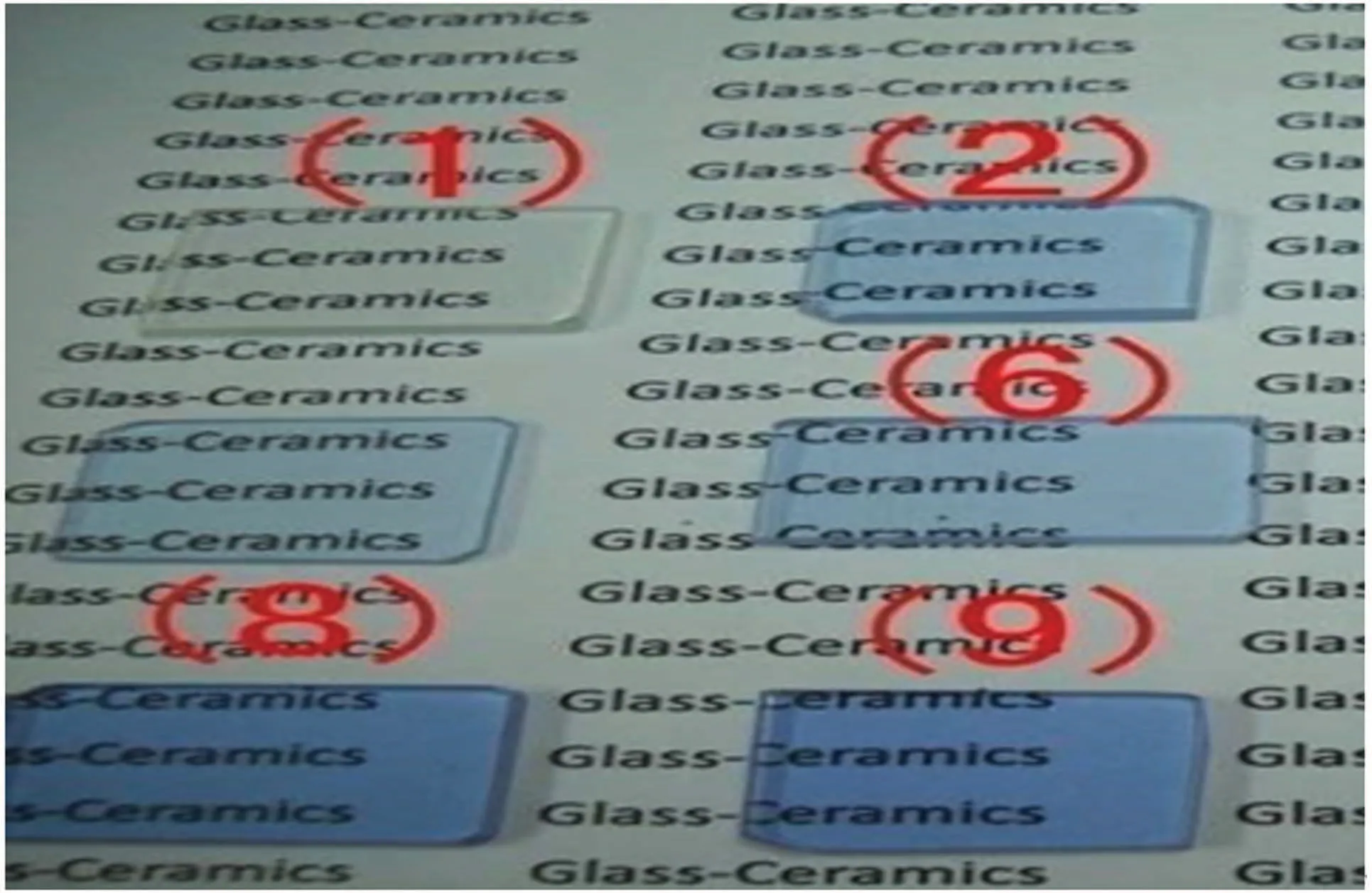
Fig.6.Transparent glass-ceramics prepared by researchers from USTB.
4.Conclusion
The SSPS is a huge project that aims to eliminate the human energy crisis, which needs years and intensive efforts.Material selection and development are crucial to the SSPS.In this article, we reviewed and looked ahead to the key energy conversion materials of the SSPS.With regard to photovoltaic cells in space, improved III–V multijunction solar cells are the best choice in the near future, while perovskite may be the best option after long-term development.With regard to the LWPT system,YAG is always the best option,and more lasers should be developed to offer more choices.Regardless of the choice of material, the energy material of the SSPS should be highly efficient, low cost, light weight, and super anti-radiation.Furthermore, energy conversion materials on Earth are just as important for the SSPS system,such as photocatalytic and high-intensity condenser mirrors on Earth.In addition, more materials are needed for the SSPS system,such as ultra-light and strengthening structural material, lubricating material, high thermal conductivity material, space thermal radiation material,energy storage material,and spacedebris-resistant material.Therefore, to provide a more accurate prediction of service properties for space materials, the space simulation testing system should be more mature.Also,we suggest the establishment of a material properties database of space–ground comparison.
Acknowledgement
Project supported by Fundamental Research Funds for the Central Universities(Grant No.FRF-TP-20-006A2).
- Chinese Physics B的其它文章
- First-principles calculations of high pressure and temperature properties of Fe7C3
- Monte Carlo calculation of the exposure of Chinese female astronauts to earth’s trapped radiation on board the Chinese Space Station
- Optimization of communication topology for persistent formation in case of communication faults
- Stability of connected and automated vehicles platoon considering communications failures
- Lightweight and highly robust memristor-based hybrid neural networks for electroencephalogram signal processing
- Method of simulating hybrid STT-MTJ/CMOS circuits based on MATLAB/Simulink

